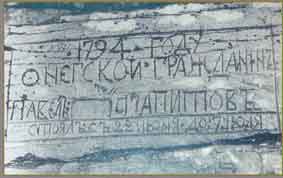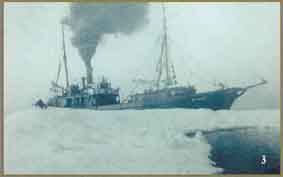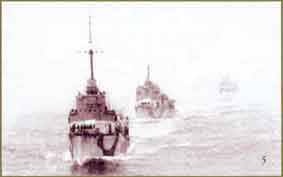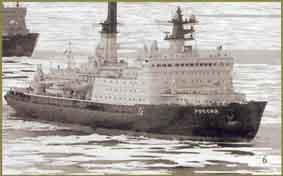History of the Kola Peninsula

 The appearance of human beings on the territory of Kola Peninsula can
related to the VI Millennium B.C. Europeans that mastered bows and spears were the first inhabitants of this land. The next wave of migrants (in
the beginning of the III millennium B.C.) has come from the land between the Oka and the Wolga river – those were the bearers of Neolithic ceramics. The largest
European collection of Neolithic Petroglyphes (this are figures carved on stones), discovered in 1997 in the area of Kanozero Lake (system of the Umba
river) is dated from the II and III millennium B.C. Judging the amount and subjects of these figures, the hunting was very successful and that in the course
of many centuries. The appearance of human beings on the territory of Kola Peninsula can
related to the VI Millennium B.C. Europeans that mastered bows and spears were the first inhabitants of this land. The next wave of migrants (in
the beginning of the III millennium B.C.) has come from the land between the Oka and the Wolga river – those were the bearers of Neolithic ceramics. The largest
European collection of Neolithic Petroglyphes (this are figures carved on stones), discovered in 1997 in the area of Kanozero Lake (system of the Umba
river) is dated from the II and III millennium B.C. Judging the amount and subjects of these figures, the hunting was very successful and that in the course
of many centuries.

 In the II – I millennium B.C. the Finno-Ugric tributes came
to the Kola Peninsula from the northern Ural and having merged with the former population of Kola Peninsula have formed a new nationality - proto-Lapps
(ancestors of the modern Lapps). The Russian hunters have reached shores of the White Sea in the IX century A.D., and have stayed here, as they have found
an extremely attractive object of hunting walruses. Walrus tusks (or "the fish tooth") were very much valued in Europe at that time. Later, the
number of objects of trade and export has considerably increased. The first permanent Russian settlements - Varzuga, Umba and Kandalaksha have appeared on
Tersky (southern) coast of Kola peninsula in the XIV century. In the II – I millennium B.C. the Finno-Ugric tributes came
to the Kola Peninsula from the northern Ural and having merged with the former population of Kola Peninsula have formed a new nationality - proto-Lapps
(ancestors of the modern Lapps). The Russian hunters have reached shores of the White Sea in the IX century A.D., and have stayed here, as they have found
an extremely attractive object of hunting walruses. Walrus tusks (or "the fish tooth") were very much valued in Europe at that time. Later, the
number of objects of trade and export has considerably increased. The first permanent Russian settlements - Varzuga, Umba and Kandalaksha have appeared on
Tersky (southern) coast of Kola peninsula in the XIV century.
Russian pomor's (the inhabitants of White and Barents sea coasts) have created the distinctive culture, which is well preserved in remote villages of
the Tersky coast until now.

 Kola
village and the old capital of our land - the Pechenga monastery on Paz river have played the special role in the reservation of Kola Peninsula after Russia in the
XVI - XIX centuries. The discovery of the incalculable underground mineral resources in the beginning of the XVI - XIX century has resulted in the
active assimilation of our northern land and the rise of majority of towns on Kola Peninsula. The harbour of Murmansk has played and still plays the great
role in the assimilation of boundless expanses of the Arctic Region and in the development of the Northern Seaway. Kola
village and the old capital of our land - the Pechenga monastery on Paz river have played the special role in the reservation of Kola Peninsula after Russia in the
XVI - XIX centuries. The discovery of the incalculable underground mineral resources in the beginning of the XVI - XIX century has resulted in the
active assimilation of our northern land and the rise of majority of towns on Kola Peninsula. The harbour of Murmansk has played and still plays the great
role in the assimilation of boundless expanses of the Arctic Region and in the development of the Northern Seaway.
For a detailed description of the photos just appoint them with your mouse. The text will appear. More information of Russian Lapland and about the Saami you can find on the following pages:
© 2002-2015 Copyright Kola Travel Plc
|
|



